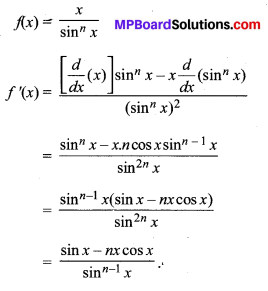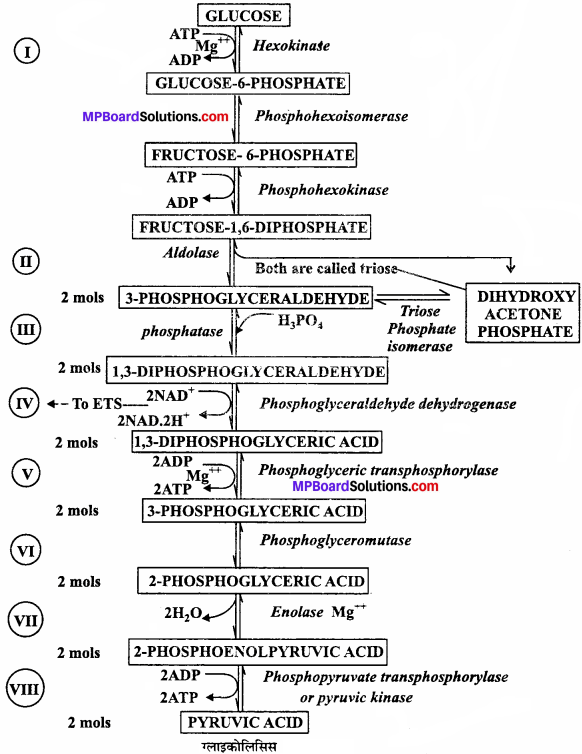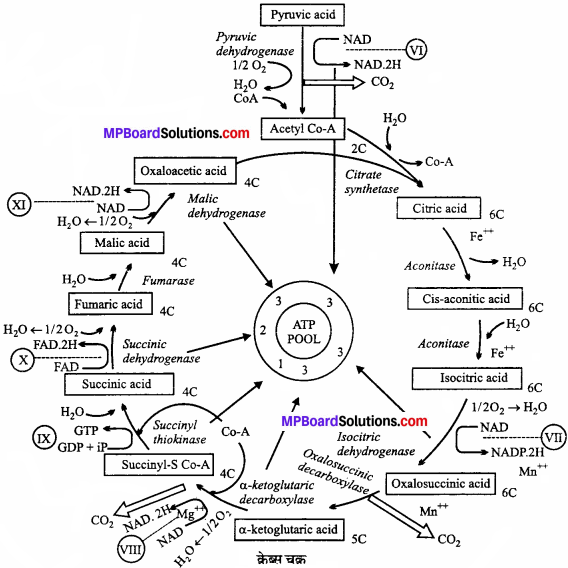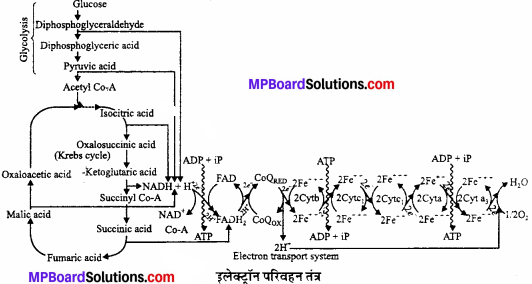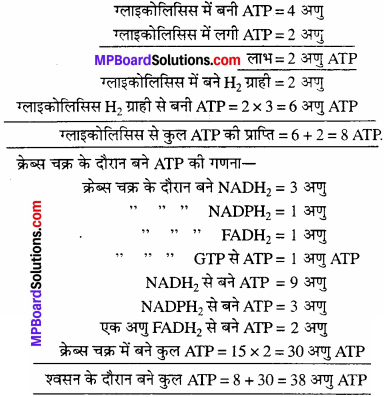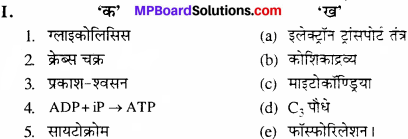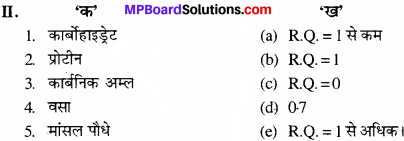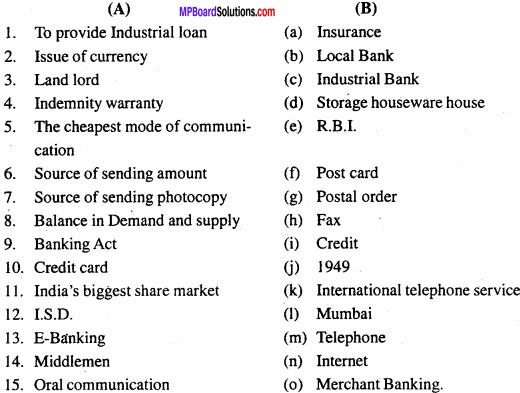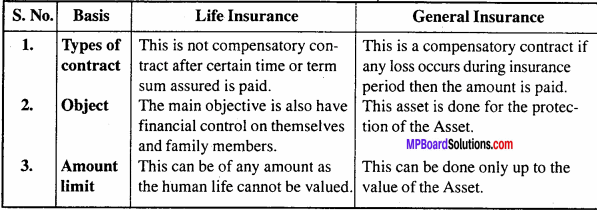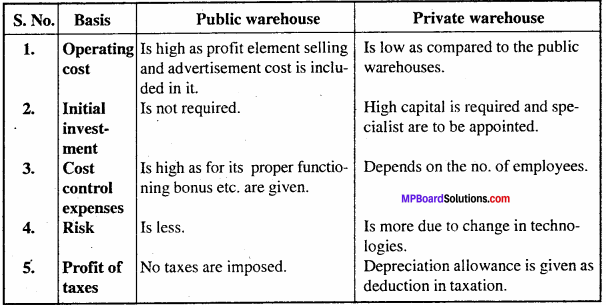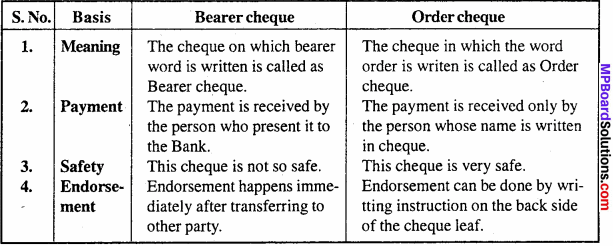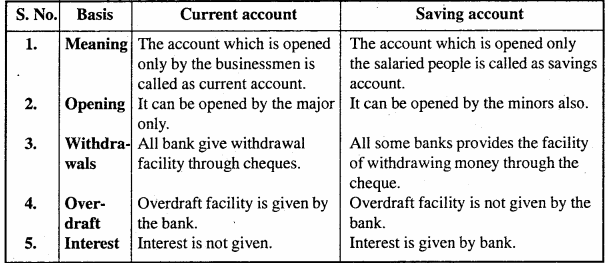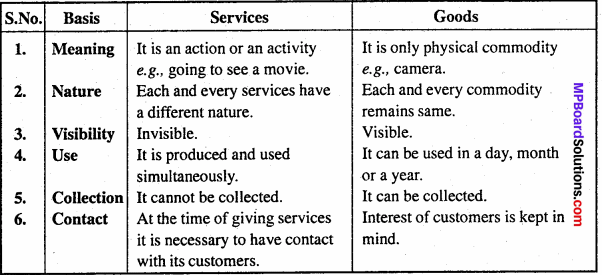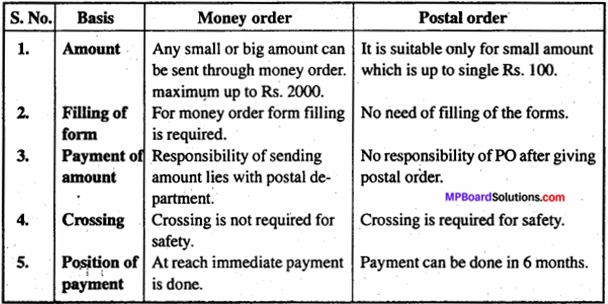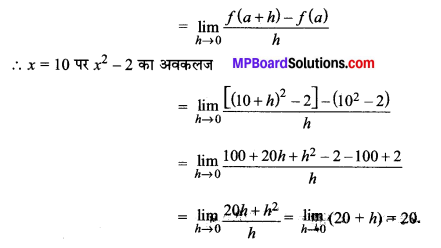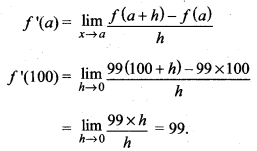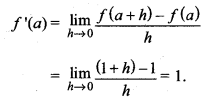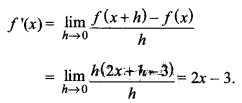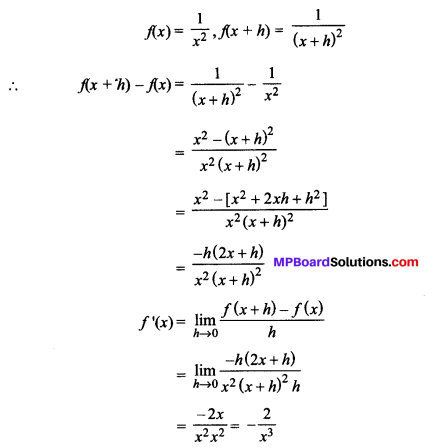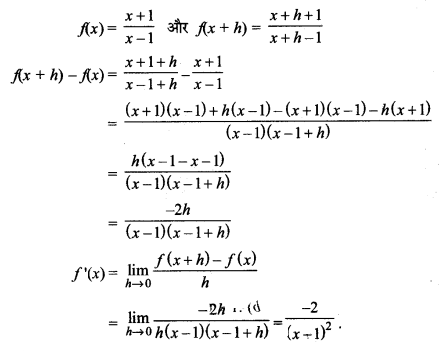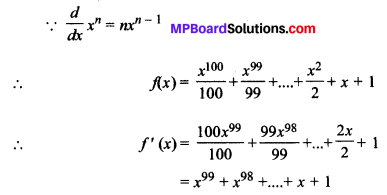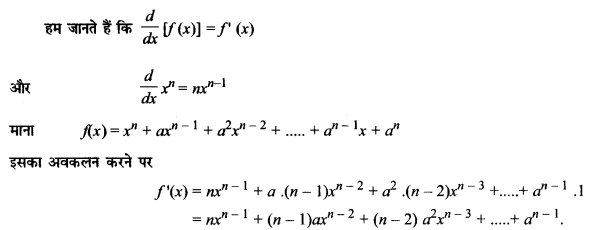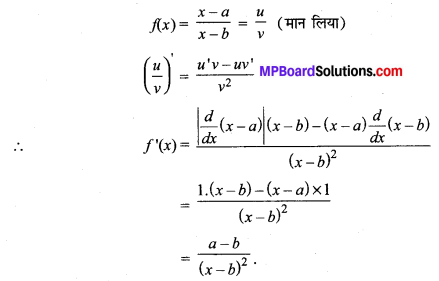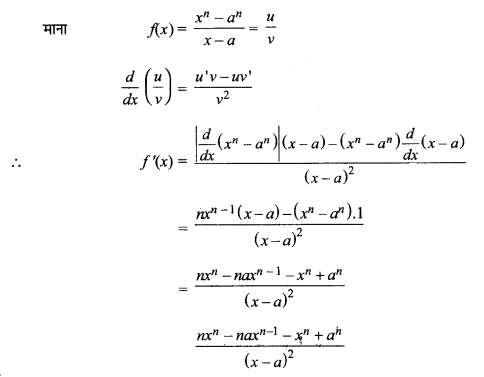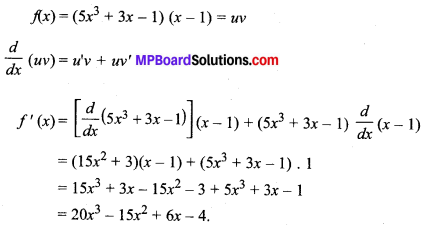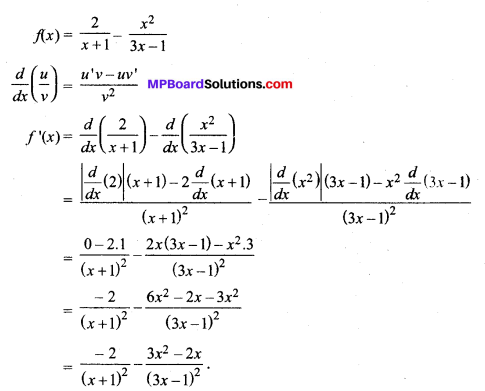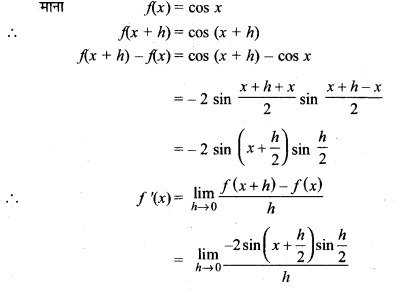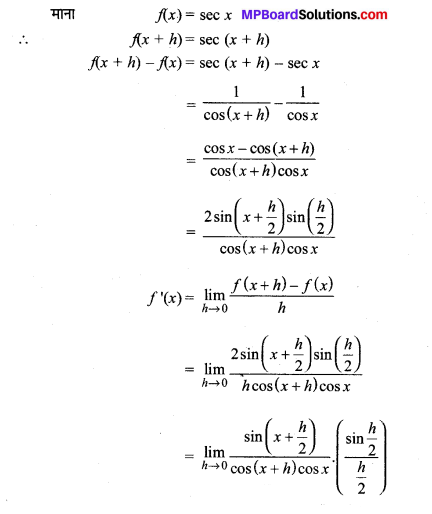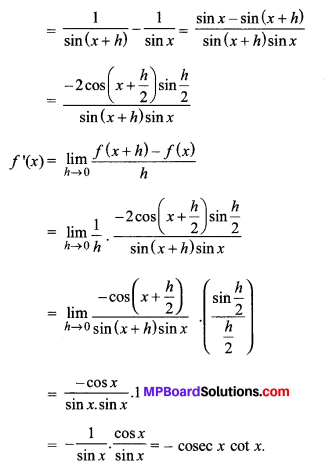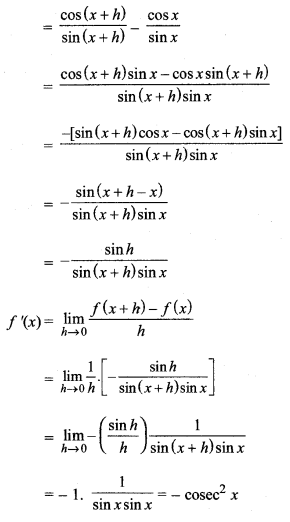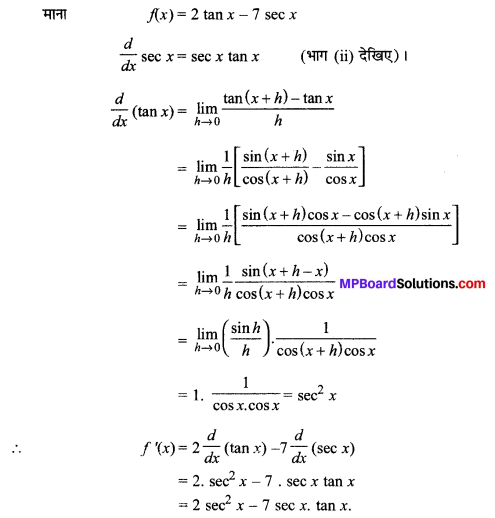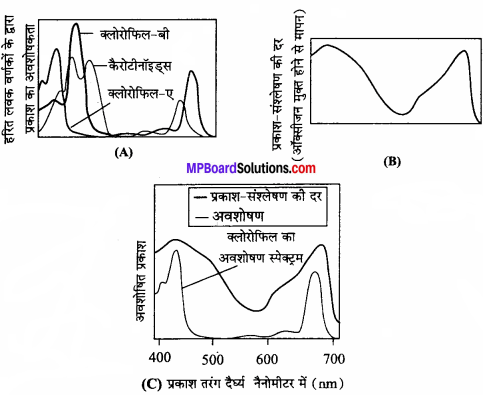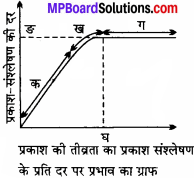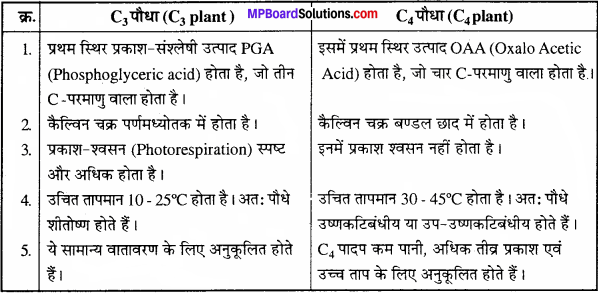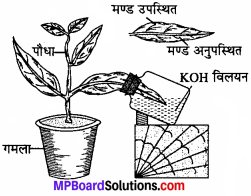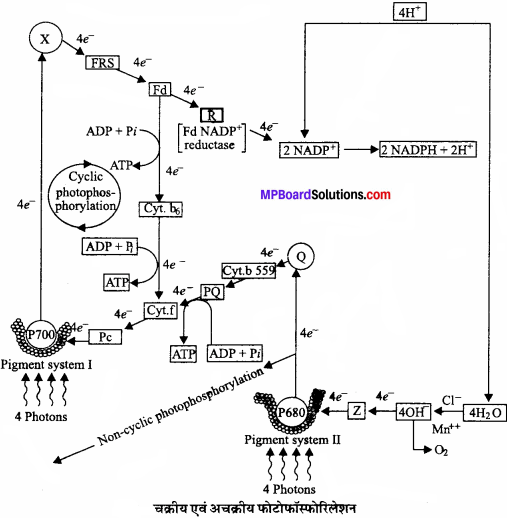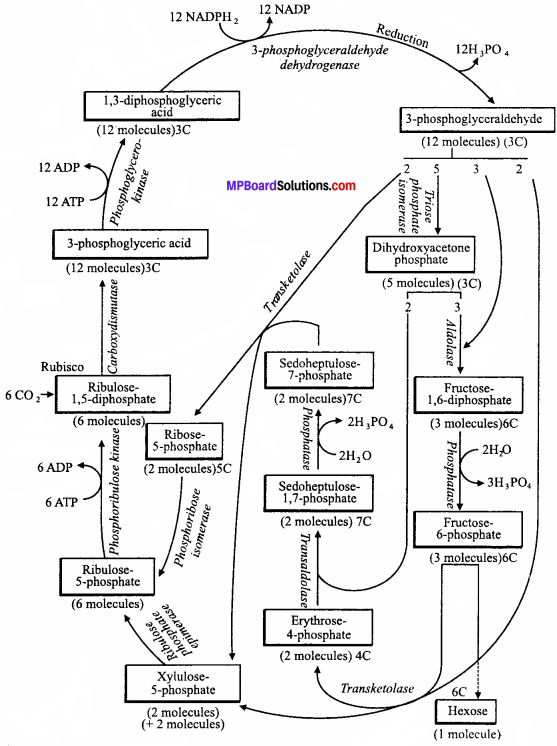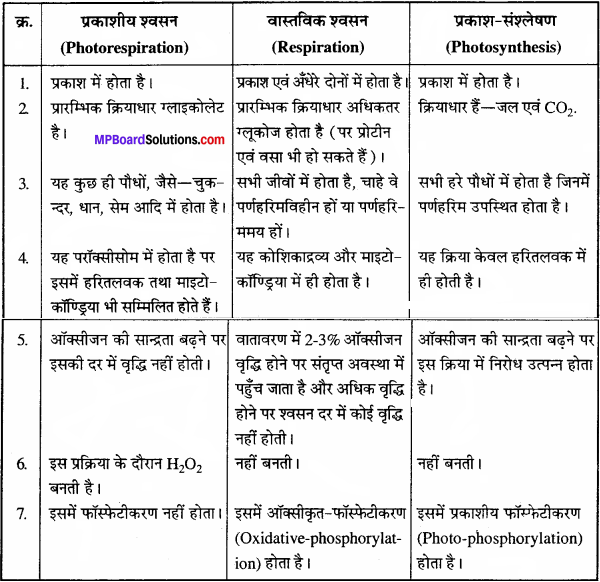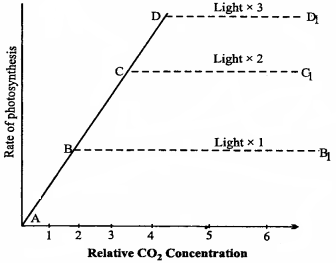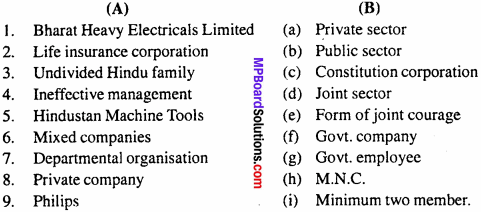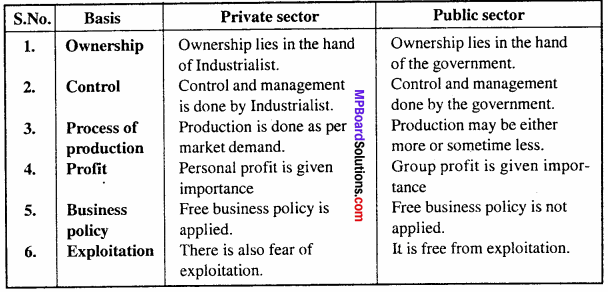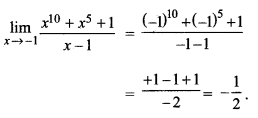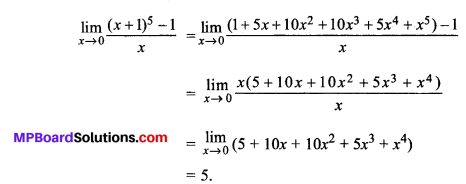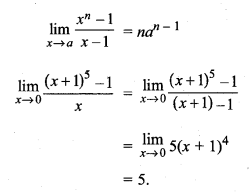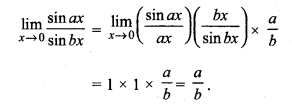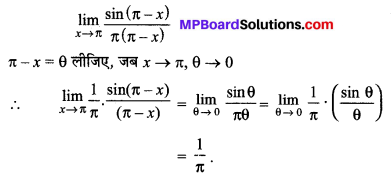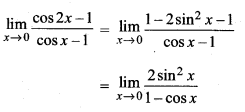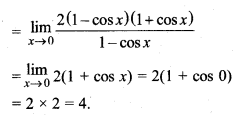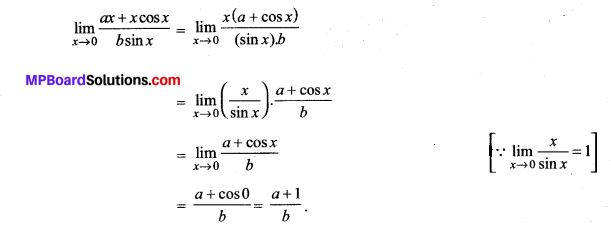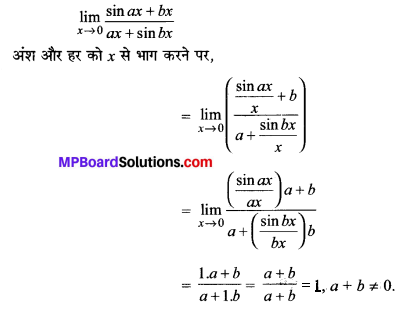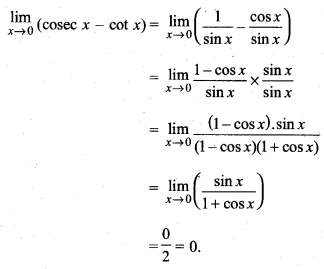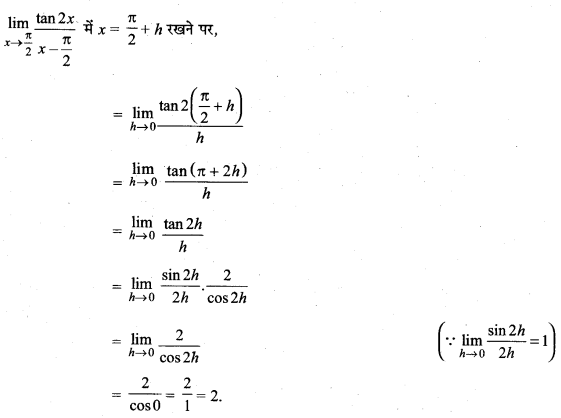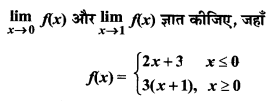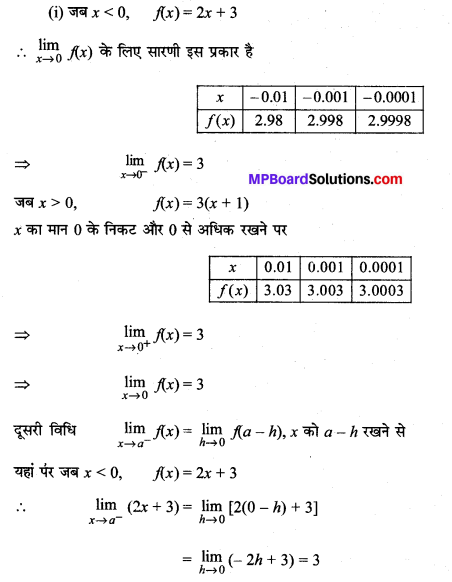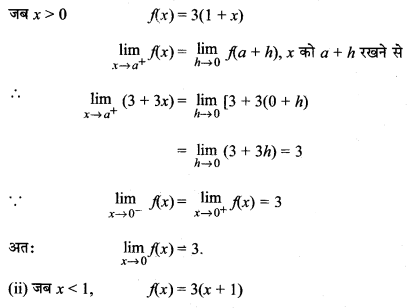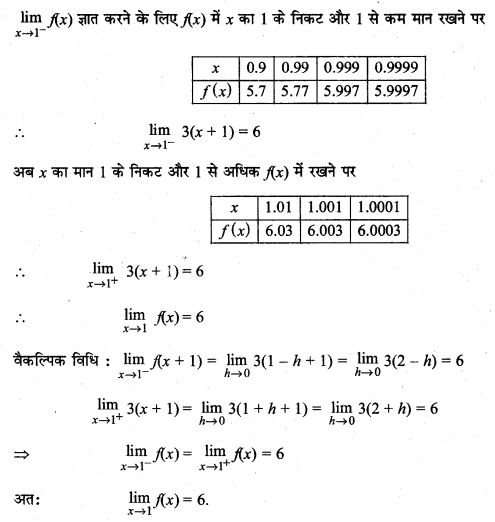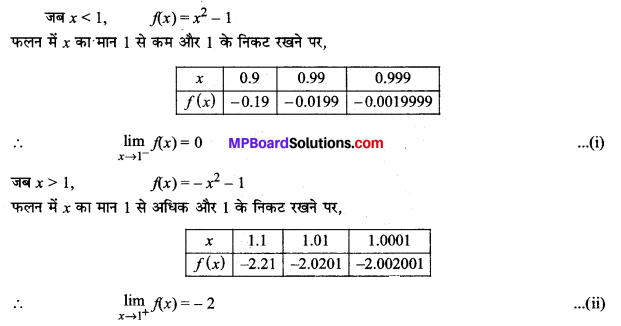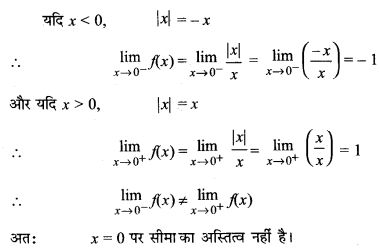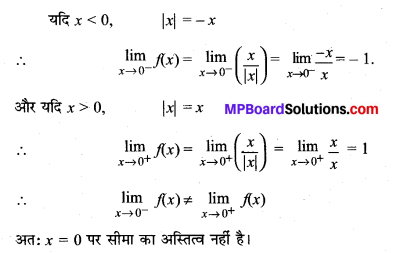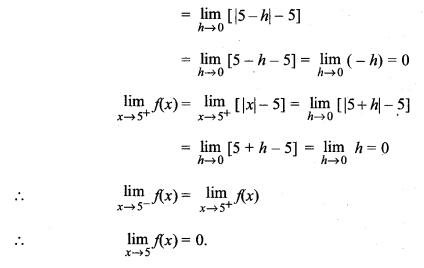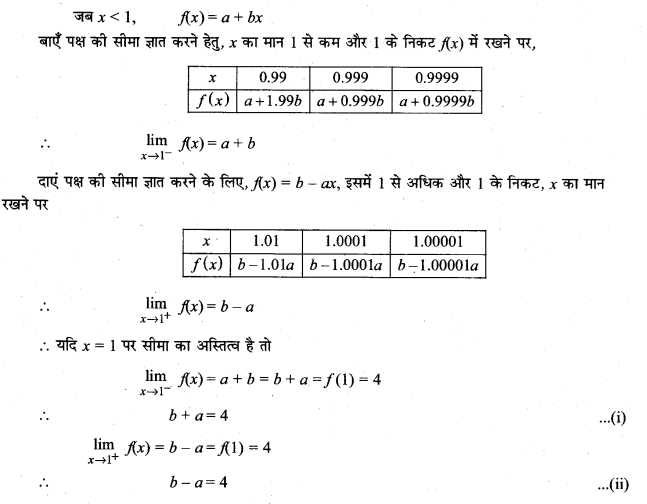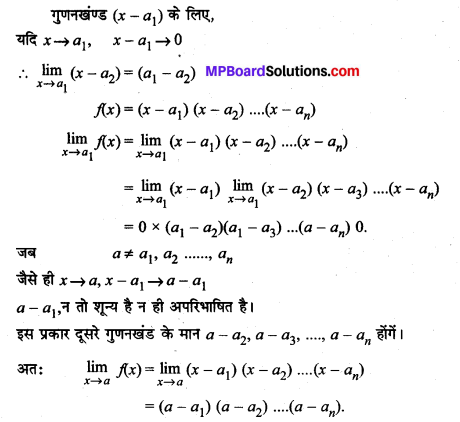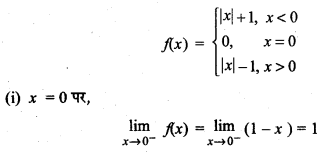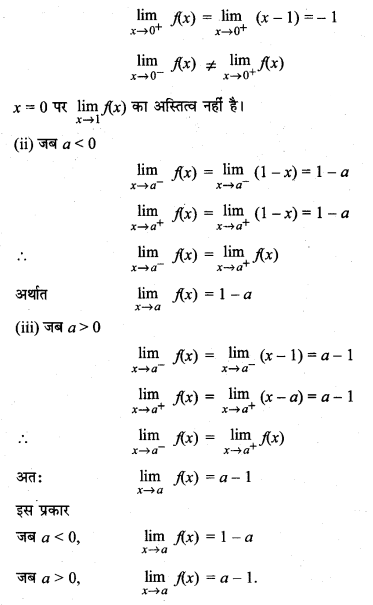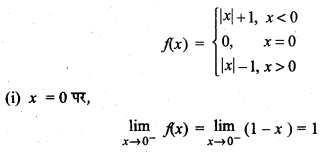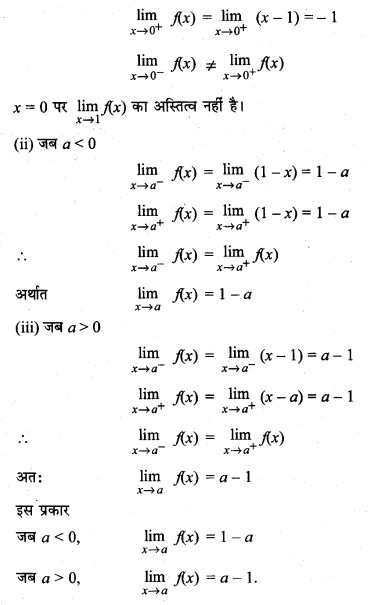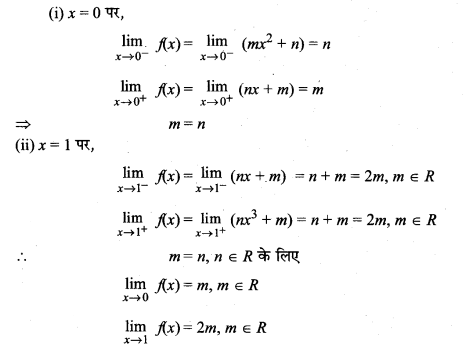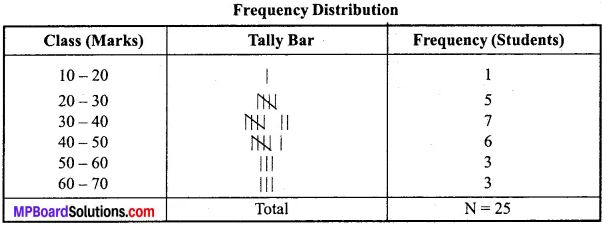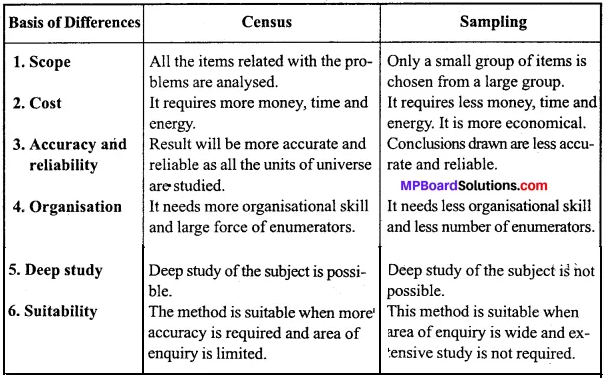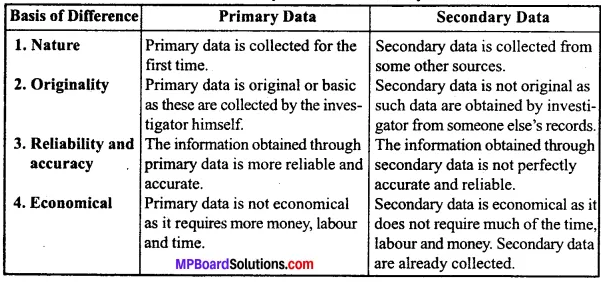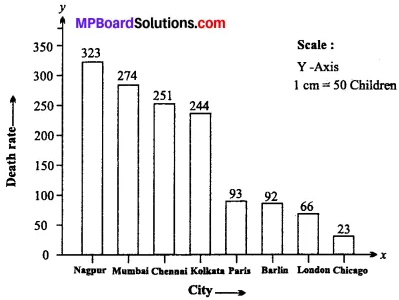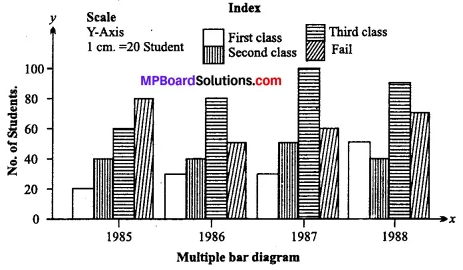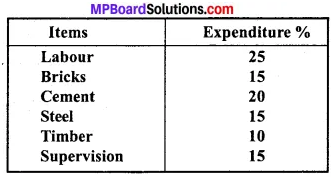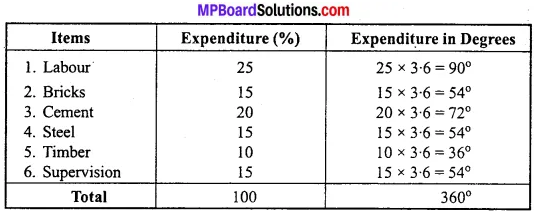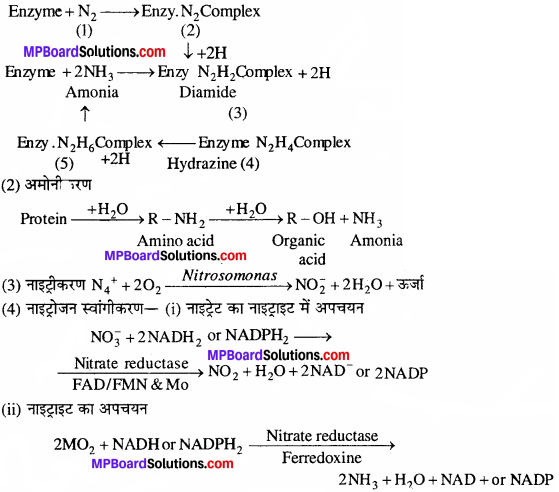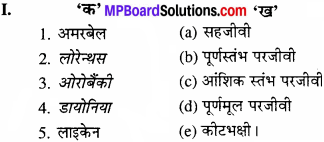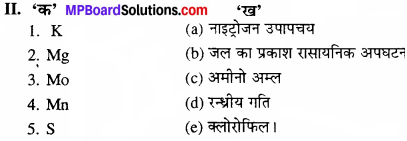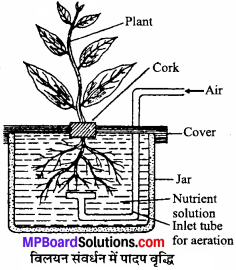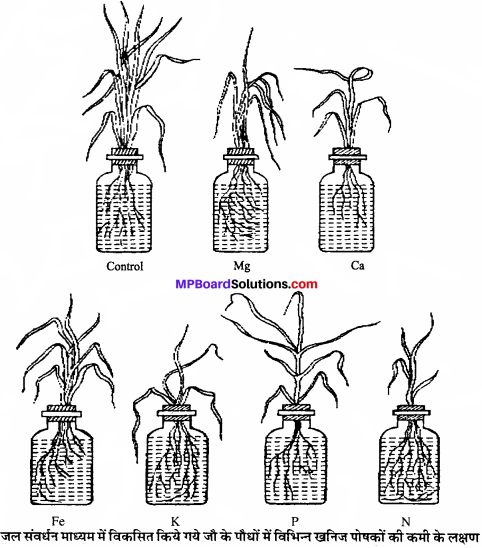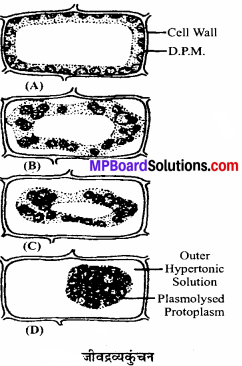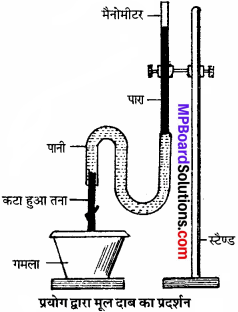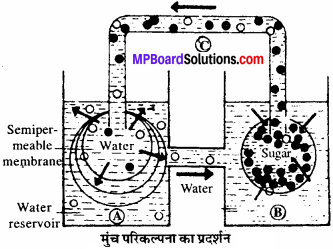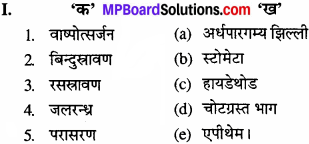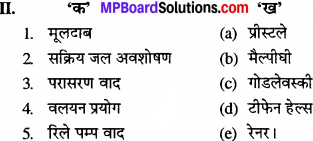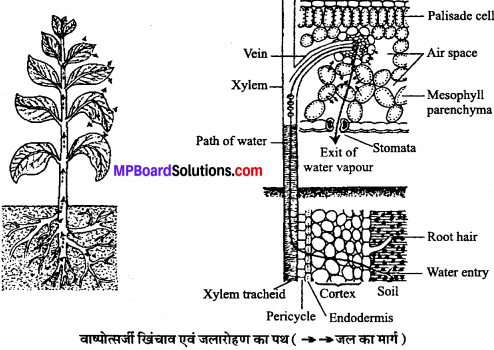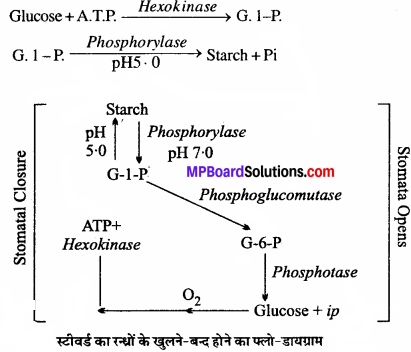MP Board Class 11th Maths Solutions Chapter 13 सीमा और अवकलज विविध प्रश्नावली
प्रश्न 1.
प्रथम सिद्धांत से निम्नलिखित फलनों का अवकलज ज्ञात कीजिए :
(i) – x.
हल:

(ii) (- x)– 1.
हल:
मान लीजिए
f(x) = (- x)– 1 = – \(\frac{1}{x}\)
∴ f(x + h)= – \(\frac{1}{x+h}\)
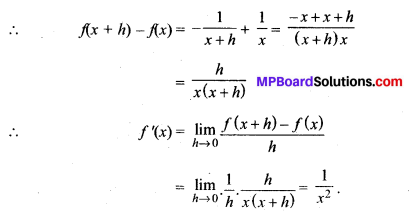
(iii) sin (x + 1).
हल:
मान f(x) = sin (x + 1)
∴ f(x + h) = sin (x + h + 1)
या f(x + h) – f(x) = sin (x + h +1) – sin (x + 1)
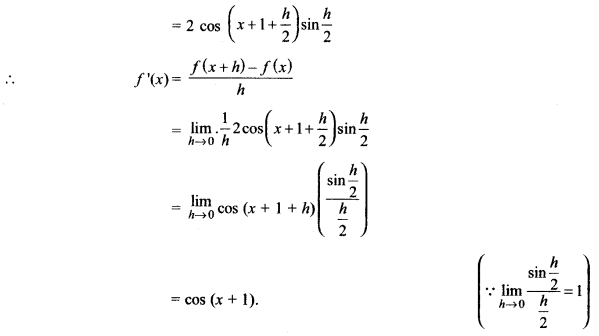
(iv) cos\(\left(x-\frac{\pi}{8}\right)\)
हल:

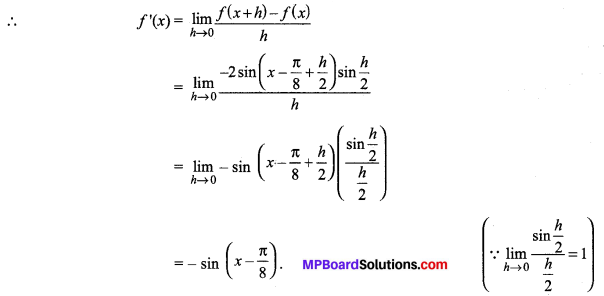
निम्नलिखित फलनों के अवकलज ज्ञात कीजिए (यह समझा जाए कि a, b, c, p, 4, r और s निश्चित शून्येत्तर अचर हैं और m तथा n पूर्णांक हैं।)
प्रश्न 2.
(x + a).
हल:
\(\frac{d}{d x}\)(x + a) = \(\frac{d}{d x}\)(x) + \(\frac{d}{d x}\)(a) = 1 + 0 = 1.
प्रश्न 3.
(px + q) (\(\frac{r}{x}\) + s)
हल:
माना f(x) = (px + q) (\(\frac{r}{x}\) + s)
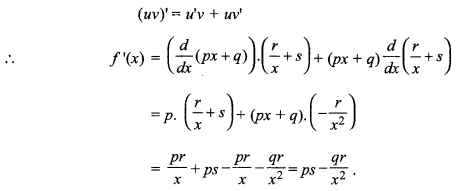
![]()
प्रश्न 4.
(ax + b) (cx + d)2.
हल:
माना, f(x) = (ax + b)(cx + d)2

= a. (cx + a)2 + (ax + b). 2c (cx + d)
= 2c(ax + b) (cx + d) + a(cx + d)2.
प्रश्न 5.
\(\frac{a x+b}{c x+d}\)
हल:
माना f(x) = \(\frac{a x+b}{c x+d}\)
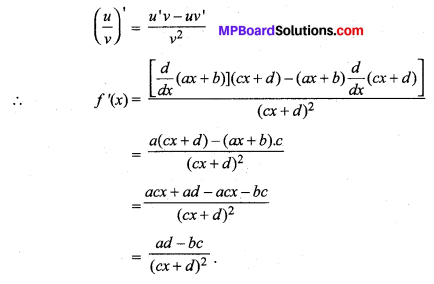
प्रश्न 6.
\(\frac{1+\frac{1}{x}}{1-\frac{1}{x}}\).
हल:
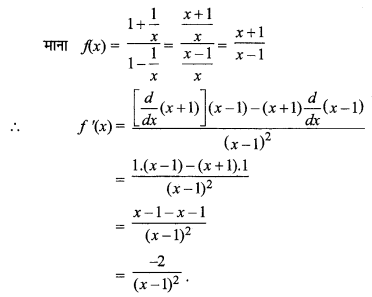
प्रश्न 7.
\(\frac{1}{a x^{2}+b x+c}\).
हल:
माना f(x) = \(\frac{1}{a x^{2}+b x+c}\)
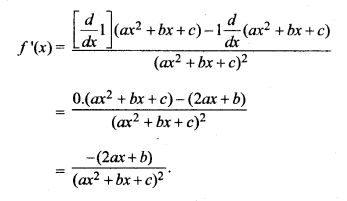
प्रश्न 8.
\(\frac{a x+b}{p x^{2}+q x+r}\).
हल:
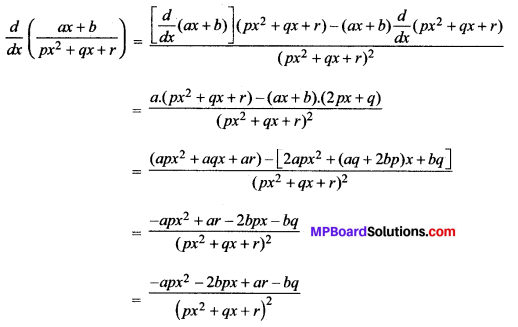
प्रश्न 9.
\(\frac{\mu x^{2}+q x+r}{a x+b}\)
हल:
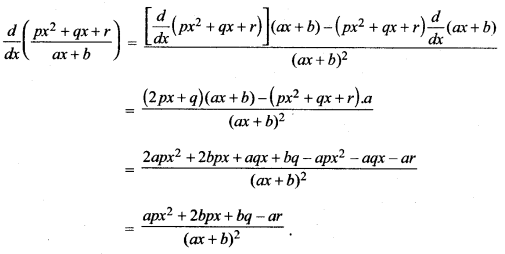
![]()
प्रश्न 10.
\(\frac{a}{x^{4}}-\frac{b}{x^{2}}\) + cos x
हल:
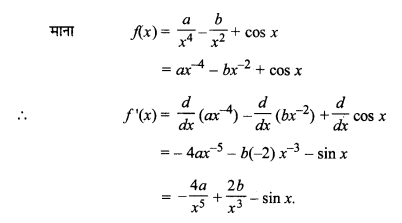
प्रश्न 11.
4\(\sqrt{x}\) – 2.
हल:
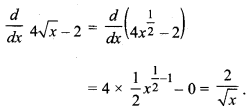
प्रश्न 12.
(ax + b)n.
हल:
माना f(x) = (ax + b)n
x के आपेक्ष अवकलन करने पर
f'(x) = n(ax + b)n – 1 \(\frac{d}{d x}\)(ax + b)
= n(ax + b)n – 1 . a
= na(ax + b)n – 1.
प्रश्न 13.
(ax + b)n (cx + d)m .
हल:
माना, fx= (ax + b)n (cx + d)m

प्रश्न 14.
sin (x + a).
हल:
माना f(x) = sin (x + a)
x + a को u रखने पर
f(x) = sin u
x के सापेक्ष अवकलन करने पर
f'(x) = \(\frac{d}{d x}(\sin u)=\frac{d}{d u}(\sin u) \frac{d u}{d x}\)
= cos u. \(\frac{d}{d x}\) (x + a) = cos (x + a) 1
∴ \(\frac{d}{d x}\) sin (x + a)= cos (x + a).
![]()
प्रश्न 15.
cosec x cot x.
हल:
माना f(x) = cosec x cot x
∵ (uv)’ = u’v + uv’
∴ f'(x) = (\(\frac{d}{d x}\) cosec x) cot x + cosec x \(\frac{d}{d x}\) (cot x)
= (- cosec x cot x) cot x + cosec x (- cosec2 x)
= – cosec3 x – cosec x cot2 x.
प्रश्न 16.
\(\frac{\cos x}{1+\sin x}\)
हल:
माना
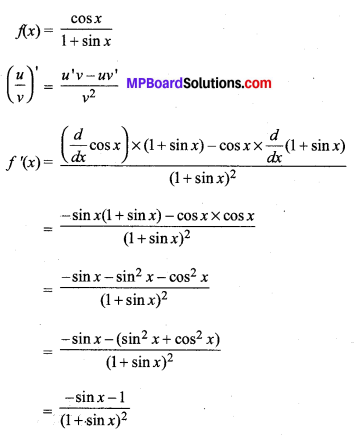
= \(\frac{-(1+\sin x)}{(1+\sin x)^{2}}\)
= – \(\frac{1}{1+\sin x}\).
प्रश्न 17.
\(\frac{\sin x+\cos x}{\sin x-\cos x}\)
हल:
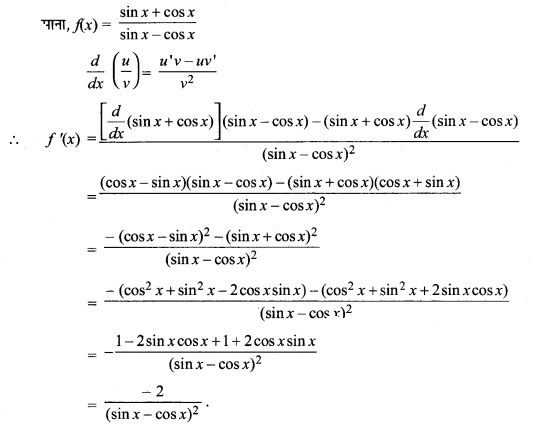
प्रश्न 18.
\(\frac{\sec x-1}{\sec x+1}\)
हल:
माना
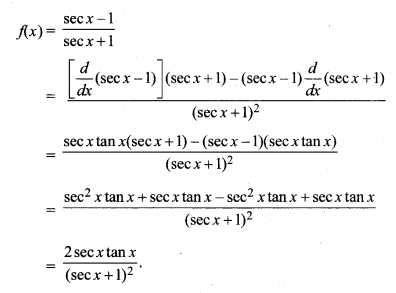
प्रश्न 19.
sinnx
हल:
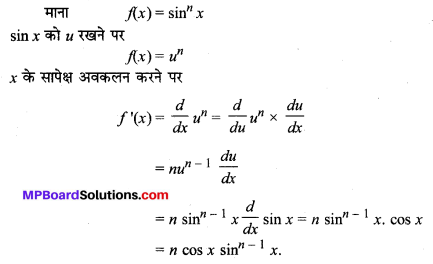
प्रश्न 20.
\(\frac{a+b \sin x}{c+d \cos x}\)
हल:
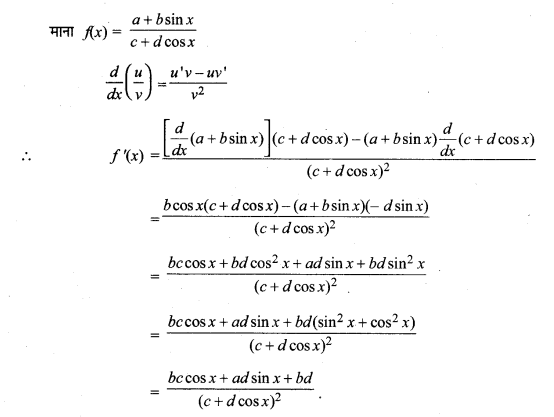
![]()
प्रश्न 21.
\(\frac{\sin (x+a)}{\cos x}\).
हल:
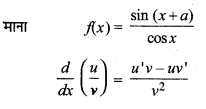
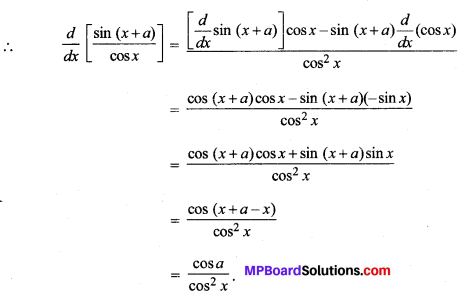
प्रश्न 22.
x4(5 sin x – 3cos x)
हल:

प्रश्न 23.
(x2 + 1)cosx.
हल:
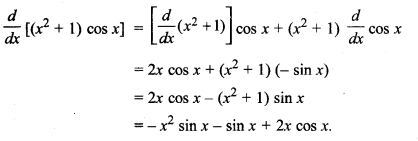
![]()
प्रश्न 24.
(ax2 + sinx)(p + q cosx).
हल:
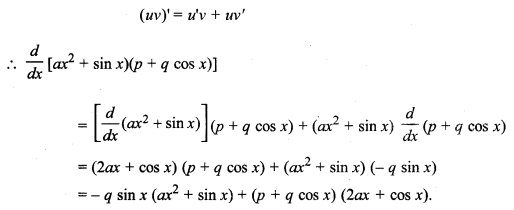
प्रश्न 25.
(x + cos x)(x – tan x).
हल:

= (1 – sin x)(x – tan x) + (x + cos x)(1 – sec2 x)
= (1 – sin x)(x – tan x) – (x + cos x) tan2x.
प्रश्न 26.
\(\frac{4 x+5 \sin x}{3 x+7 \cos x}\).
हल:
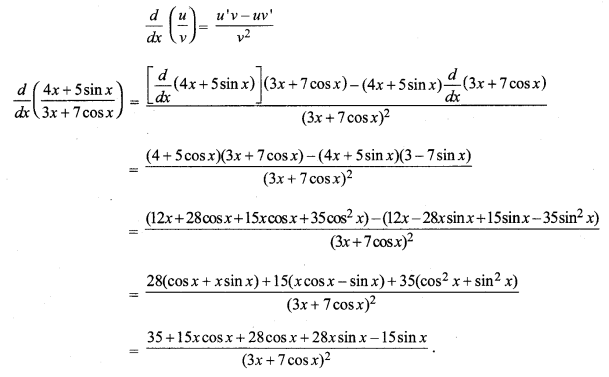
प्रश्न 27.
\(\frac{x^{2} \cos \left(\frac{\pi}{4}\right)}{\sin x}\).
हल:
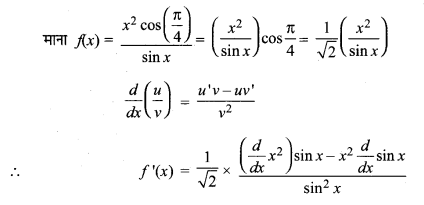
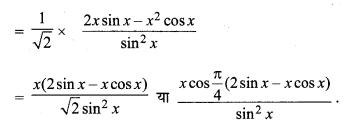
प्रश्न 28.
\(\frac{x}{1+\tan x}\).
हल:
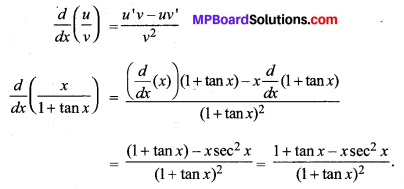
![]()
प्रश्न 29.
(x + sec x) (x – tan x).
हल:

प्रश्न 30.
\(\frac{x}{\sin ^{n} x}\).
हल:
माना
